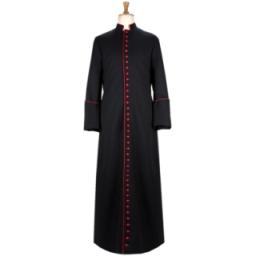

Q. 1. What is the purpose of the cassock? Is it still work by priests nowadays?
A. 1. The cassock, also known as a soutane, comes in a number of styles or cuts, though no particular symbolism attaches to these. It usually has 33 buttons (symbolic of the years of the life of Jesus) down the front. There are two types of cassock: the ordinary cassock and the choir cassock. A band cincture or fascia is also worn with both types of cassocks. The ordinary cassock is the black cassock worn by most clerics. Choir dress cassocks for bishops, protonotaries apostolic, and honorary prelates are purple. "Ankle-length garment" is the literal meaning of the corresponding Latin term, vestis talaris. It is related to the habit, which is traditionally worn by nuns, monks, and friars.
In religious services, the cassock has traditionally been worn underneath vestments, such as the alb.
In the West, the cassock is little used today except for religious services, save for clergy in traditionalist Catholic orders such as the Society of Saint Pius X and the Priestly Fraternity of Saint Peter who continue to wear the cassock as their standard clerical attire. However, in many countries it was the normal everyday wear of the clergy until the second half of the 20th century, when it was replaced even in those countries by a conventional suit, distinguished from lay dress by being generally black and by incorporating a clerical collar.